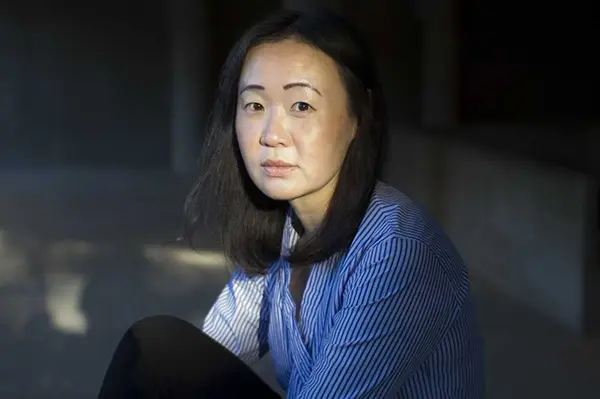Lim Honored with American Academy of Arts and Letters Award in Literature
 Image by Courtesy
Image by Courtesy
04/17/2020
By Katharine Webster
Shortly before Assoc. Prof. Sandra Lim completed her Ph.D. in English literature, she decided to take a chance on her poetry and apply to M.F.A. programs in creative writing.
“It felt like a big, daring move to invest in my imagination,” she says.
Out of her two years at the Iowa Writers Workshop came her first book, “Loveliest Grotesque,” winner of the Kore Press First Book Award for Poetry. A decade later, she followed up with “The Wilderness,” which won the 2013 Barnard Women Poets Prize.
Now, Lim has won a national award from the American Academy of Arts and Letters. She is one of eight writers to win a $10,000 Arts and Letters Award in literature this year.
Lim teaches Introduction to Creative Writing and Poetry I and II in the English Department’s Creative Writing Program. She also teaches an upper-level creative writing capstone class and courses in 20th century American literature.
She recently spoke with us by phone about why she writes poetry and how she teaches the craft.
Q: Why do you write poetry?
A: Fundamentally, I think I write to examine and make sense of life – my own life and the life of the world – and to feel the freshness and grace and oddity of social, natural and inner worlds. Life enthralls me anew in the detachment that writing affords; I get to create possibilities and make choices. I get to make something – something beautiful, I hope. And it’s supremely companionate, like the act of reading.
Q: Why should people read poetry?
A: I don’t think poetry should be foisted upon people like a multivitamin or offered up as some sugary treat. It can lend depth of feeling to some people, or a clarity of perception to others – these might be just two ways people can feel less lonely or less spiritually claustrophobic for a moment.
There’s a mysteriousness and vitality in great poems. Sometimes, as you read, you feel an astonished sense of recognition or relief; other times, some narrative you’ve set store by for years may be upended by what you find in a poem.
Q: What poems or poets do you find yourself returning to again and again, and what are you reading right now?
A: I often go back to Emily Dickinson, Wallace Stevens, George Oppen or Sylvia Plath, to name a few. Right now, it is hard to concentrate, but I have been thumbing through the works of some metaphysical poets – John Donne, mainly, and also the Swedish poet Tomas Tranströmer.
Q: How do you teach creative writing?
A: One of the first things, especially when you teach younger adults, is to help them understand that it’s a craft. There are a lot of preconceptions that you have to undo. Poetry isn’t just writing about your feelings; maybe you’re using your feelings to explore an idea.
You really learn to write by reading other writers. In my capstone class, the students have to come up with a reading list at the beginning of the semester. If they’re writing poetry, then they need to read at least 10 books – some poetry and some books on craft – and they have to keep a reading journal. As they read, they take notes on what’s interesting to them about that particular work, what they can learn from it, what they admire – the tools of the trade.
Q: Much of your work is written in free verse. Do you teach structured forms like the sonnet to students as a way of demonstrating the tools of the trade?
A: When I’m teaching poetry as part of Intro to Creative Writing, we talk about syntax, line, image, repetition, voice and echo, etc. We’ll look at more fixed forms like villanelles and sestinas, and I’ll often have them write in closed forms for practice.
I write a lot in free verse. It’s generally more intuitive for me. Usually it will start with a line or a certain image, and I’m just trying to figure out as I’m writing it what the actual form of the poem is. The form and the poem come together: I’m not pouring content into a pre-set form. It happens in tandem. That’s the mysterious part, and it’s the hardest part to teach.
This is where reading other work, so that you start to recognize gestures or moods, is very helpful.
Q: How would you describe your experience as part of UML’s creative writing faculty?
A: I feel so lucky to be surrounded by terrific colleagues: fellow poet Maggie Dietz and fiction and nonfiction writers Andre Dubus III and Maureen Stanton, respectively. We all genuinely like each other, and we are all dedicated to sharing with our students the complicated addictiveness of writing and reading.
I personally love how susceptible our UML students are, in the best senses of that word: They are receptive, open, interested. I’m so honored to work with them.




